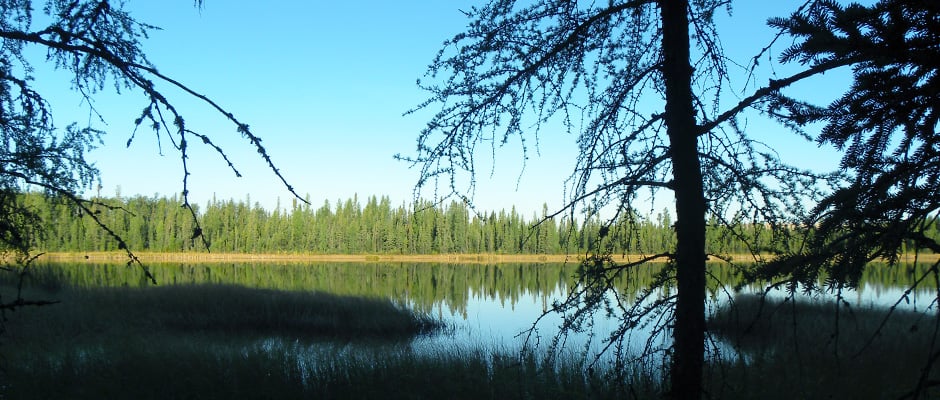Share this article
Boreal Forest Plenary Examines Challenges of Conservation
An expert panel of speakers took a deep look at the challenges and issues of management and conservation of Canada’s Boreal Forest.
The Boreal has some of the world’s longest undammed rivers, millions of birds and a massive number of diverse ecosystems, according to Jeff Wells, organizer of Tuesday’s plenary session, “Balancing Conservation and Development in the Final Frontier – Canada’s Boreal Forest” at The Wildlife Society’s annual conference in Winnipeg.
“The boreal forest is slowly being transformed just as in the rest of the world,” said Steve Kallick of Pew Charitable Trusts in the introduction of the session before the expert panel of speakers took over. “The biodiversity crisis hasn’t gone away.”
Importance of Treaties
David Schindler opened the panel session saying how much politics matter, and noting that one bad political regime can destroy years of conservation work.
He discussed the need to uphold a number of treaties that have been around in the Boreal Forest, and that have been partly responsible for its protection, so far — even if some of them haven’t been honored very well.
These treaties are especially important because they also involve the rights and subsistence of the communities in the Boreal, including some areas that are being drastically changed by dams or mining development like the oil sands.
“You don’t have to know a lot of ecology to tell you that you can’t make a lot of subsistence in a mine pit.”
Including Aboriginal Communities in All Decisions
Chief Ron Evans stressed the need to hold ourselves responsible for the land.
“The relationship with land is one of the most important aspects of our culture,” the Grand Chief of the Assembly of Manitoba Chiefs said.
He said that economic development is responsible for long-term negative effects from climate change and ecological damage. “We take note of considerable damage to our environment, and all in the name of progress.”
Like Schindler, he also spoke about treaty rights, in particular for the need for aboriginal communities to exercise these rights.
What’s In It for the Ducks?
Gregory Siekaniec, former CEO of Ducks Unlimited Canada, pointed out that there are 1.5 million acres of woodlands, with some wetland networks that are larger than entire countries, but some people still don’t truly understand what a Boreal Forest is.
He said conservation of the Boreal sometimes felt like “running on a treadmill,” in which you work a lot and sweat, but barely gain ground.
But without this work, the conditions of the Boreal would be significantly worse for the 40 percent of North America’s waterfowl that breed in the forest and wetlands within.
It’s vital, he said, to conserve this land both for these birds and for the people living in these areas.
“It’s one of the most respectful things we can do with the communities that live within the Boreal Forest,” he said.
Bringing Everyone to the Table
Bob Fleet, the vice president of Forestry and Environment at Tolko Industries, Ltd., spoke about some of the enormous challenges in bringing together the various parties involved in the enormously complex Canadian Boreal Forest Agreement.
“We had no mandate, we weren’t the government,” he said, adding that it was often difficult to bring the groups with diverse interests to the table. But through collaboration of the various non-profit groups, forestry and mining interests, governments and Aboriginal groups, an agreement was eventually reached.
“Sometimes there were decisions made that were at the expense of science, and sometimes there were decisions made that were at the expense of the economy,” he said. “It’s not about every caribou, it’s not about every tree.”
https://creativecommons.org/licenses/by-sa/2.0/Header Image: Boreal forest close to the Quarry of the Ancestors. Image Credit: CLS Research Office, licensed by cc 2.0








